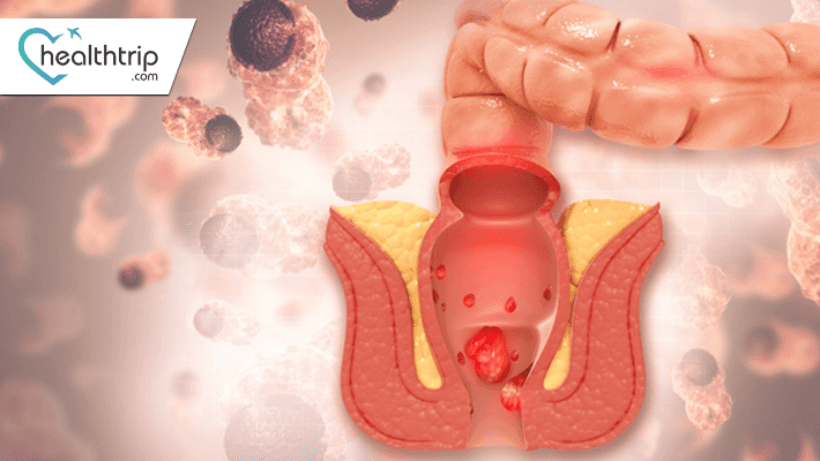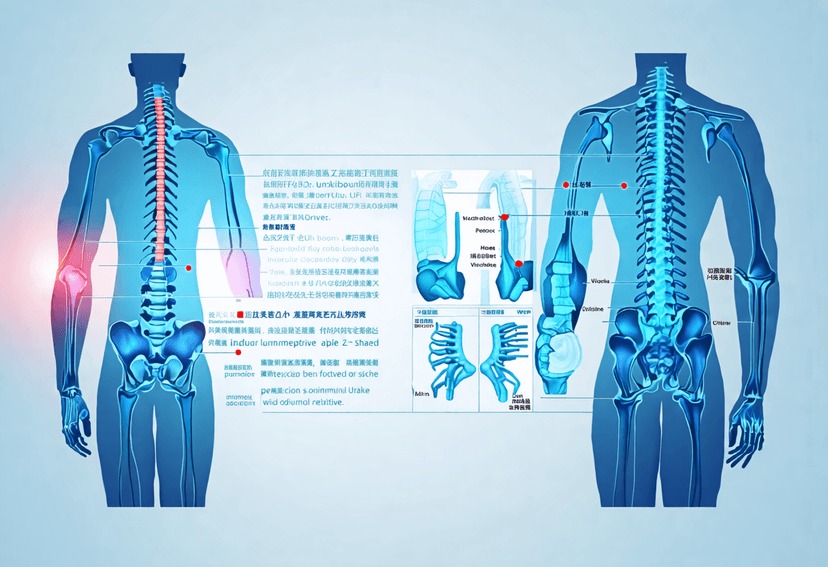
Behind the Shadows: Shedding Light on Anal Cancer
13 Oct, 2023
 Healthtrip Team
Healthtrip TeamAnal cancer
Anal cancer is a relatively uncommon form of cancer that develops in the tissues of the anus. The anus is the opening at the end of the rectum through which stool passes out of the body. While anal cancer is rare compared to other types of cancer, its incidence has been gradually increasing in recent years.
Understanding the intricacies of anal cancer is crucial due to the complex nature of the disease and its potential impact on an individual's health.
Most popular procedures in India
Types of Anal cancer
Wellness Treatments
Give yourself the time to relax
Lowest Prices Guaranteed!

Lowest Prices Guaranteed!
Anal cancer can be classified into different types, each with distinct characteristics and origins. Understanding these types is essential for accurate diagnosis and targeted treatment:
1. Squamous Cell Carcinoma:
This is the most common type of anal cancer, accounting for the majority of cases. It originates in the squamous cells that line the anus and is often associated with human papillomavirus (HPV) infection.
2. Adenocarcinoma:
Adenocarcinoma of the anus develops in the glandular cells of the anus. While less common than squamous cell carcinoma, it presents different challenges in terms of diagnosis and treatment.
3. Melanoma:
Although rare, anal melanoma can occur in the pigmented cells of the anus. Melanomas are generally known for their aggressive nature and require specialized treatment approaches.
4. Basal Cell Carcinoma:
Basal cell carcinoma is a rare form of anal cancer that starts in the basal cells of the skin. It is less aggressive than squamous cell carcinoma but still requires attention and appropriate management.
Demographics
Anal cancer incidence rates can vary across different demographic factors, providing valuable insights into risk profiles and potential preventive strategies:
1. Age Groups:
- Incidence rates often show variations among different age groups. While anal cancer can affect individuals of any age, certain age brackets may exhibit higher susceptibility.
2. Genders:
- Anal cancer can affect both males and females, but there may be variations in incidence rates between the two genders. Understanding these differences is vital for targeted public health initiatives and awareness campaigns.
3. Geographical Prevalence:
- The prevalence of anal cancer can vary geographically. Factors such as lifestyle, cultural practices, and healthcare access contribute to these variations. Analyzing geographical patterns helps identify high-risk areas and implement region-specific preventive measures.
4. Ethnicity and Race:
- Certain ethnic and racial groups may have different rates of anal cancer incidence. Exploring these variations provides a more nuanced understanding of the disease and aids in tailoring healthcare interventions.\
Symptoms and Signs
a. Early Symptoms:
- Anal Bleeding: Early-stage anal cancer may present with rectal bleeding, which can be visible in the stool or on toilet paper. This symptom is often one of the first indicators.
- Anal Itching or Discomfort: Persistent itching, discomfort, or a feeling of irritation in the anal area can be an early sign. These symptoms may be attributed to changes in the skin caused by the developing cancer.
- Changes in Bowel Habits: Individuals may experience alterations in bowel habits, such as constipation or diarrhea, which can be indicative of early-stage anal cancer affecting the rectum.
- Pain During Bowel Movements: Discomfort or pain during bowel movements can be an early symptom, especially if there is an underlying tumor causing obstruction or irritation.
b. Advanced Symptoms:
- Persistent Pain: As the cancer progresses, individuals may experience persistent or worsening pain in the anal or rectal area. This pain may radiate to nearby areas and could indicate advanced disease.
- Changes in Bowel Function: Advanced anal cancer can lead to more pronounced changes in bowel habits, such as persistent constipation or diarrhea, and may be associated with a sense of incomplete bowel emptying.
- Unexplained Weight Loss: Significant and unexplained weight loss can be a symptom of advanced cancer. It indicates that the body is expending more energy than usual, often due to the demands of the growing tumor.
- Fatigue: Individuals with advanced anal cancer may experience persistent fatigue, which can be a result of the body's response to the cancer or as a side effect of treatments.
Common Signs to Watch For:
- Palpable Mass or Lump: A palpable mass or lump near the anus may be felt by the individual or detected during a physical examination. This can be a sign of a developing tumor.
- Changes in Anal Skin Color or Texture: Changes in the color or texture of the skin around the anus may be observed. This can include redness, discoloration, or the development of sores.
- Enlarged Lymph Nodes: Swelling or enlargement of lymph nodes in the groin area can be a sign that the cancer has spread to nearby lymph nodes.
Causes of Anal cancer
Anal cancer is a complex disease with multiple factors contributing to its development. Understanding these factors is essential for preventive efforts and targeted interventions:
- Human Papillomavirus (HPV):
- Persistent infection with certain strains of HPV, particularly HPV-16 and HPV-18, is a major risk factor for the development of anal cancer. HPV is a sexually transmitted infection that can also lead to other cancers.
- Immunosuppression:
- Weakened immune systems, either due to medical conditions (e.g., HIV/AIDS) or immunosuppressive medications, increase the risk of anal cancer.
- Anal Infections and Inflammation:
- Chronic conditions such as anal infections or inflammatory diseases may contribute to the development of cancer over time.
- Smoking:
- Tobacco use, particularly smoking, is associated with an increased risk of anal cancer. The carcinogens in tobacco can affect the cells of the anus.
- Anal Intercourse:
- Engaging in receptive anal intercourse is considered a risk factor for anal cancer, possibly due to increased exposure to HPV.
Diagnosis of Anal cancer
Screening Methods:
1. Digital Rectal Exam (DRE):
- A digital rectal exam involves the healthcare provider inserting a gloved, lubricated finger into the rectum to feel for any abnormalities, such as lumps or masses.
2. Anal Pap Smear:
Similar to a Pap smear for cervical cancer, this involves collecting cells from the anal canal to check for abnormalities, especially in individuals at higher risk, such as those with HIV.
3. High-Resolution Anoscopy (HRA):
HRA is a procedure where a magnifying instrument is used to examine the anal canal for abnormal areas. It can help in identifying precancerous lesions or early-stage cancer.
Diagnostic Procedures:
1. Biopsy:
A biopsy is the definitive diagnostic procedure for anal cancer. It involves the removal of a small sample of tissue from the suspected cancerous area. The biopsy is then examined under a microscope to determine the presence of cancer cells and their type.
2. Imaging Studies:
- Endorectal Ultrasound (ERUS): This involves the insertion of a small ultrasound probe into the rectum to create detailed images of the anal canal and nearby structures.
- CT Scan (Computed Tomography): CT scans provide cross-sectional images of the abdomen and pelvis, helping to determine the size and extent of the tumor.
- MRI (Magnetic Resonance Imaging): MRI scans can offer detailed images of soft tissues, aiding in assessing the extent of the cancer and its proximity to surrounding structures.
3. PET-CT (Positron Emission Tomography-Computed Tomography):
This imaging test combines PET and CT scans to evaluate the metabolic activity of cells. It is useful in determining the spread of cancer to lymph nodes or distant organs.
Treatment Options
1. Surgery:
- Local Excision: Removal of the tumor and a small amount of surrounding tissue. Suitable for early-stage cancers.
- Abdominoperineal Resection (APR): Removal of the anus, rectum, and part of the colon, with the creation of a permanent colostomy. Used for more advanced cancers.
2. Radiation Therapy:
- External Beam Radiation: Directed at the tumor from outside the body.
- Brachytherapy: Internal radiation using a radioactive source placed near the tumor.
3. Chemotherapy:
- Systemic Chemotherapy: Medications administered orally or intravenously to kill cancer cells or stop their growth.
- Topical Chemotherapy: Creams or gels applied directly to the affected area.
4. Immunotherapy:
- Immune Checkpoint Inhibitors: These drugs enhance the body's immune response against cancer cells by blocking certain proteins that inhibit immune activity.
5. Targeted Therapy:
- Epidermal Growth Factor Receptor (EGFR) Inhibitors: Targeting specific proteins involved in cancer cell growth.
- Angiogenesis Inhibitors: Disrupting the formation of blood vessels that supply the tumor.
Risk Factors
- HIV infection
- Smoking cigarettes
- Receptive anal sex
- Multiple sexual partners
- A weakened immune system
- Anal dysplasia (abnormal cells in the lining of the anus)
Complications
- Potential Complications During and After Treatment:
- Infection at the surgical site
- Wound healing issues
- Adverse reactions to chemotherapy or radiation
- Bowel function changes after surgery
- Long-Term Effects:
- Sexual dysfunction
- Altered bowel habits
- Lymphedema (swelling due to lymph node removal)
- Psychological impact
Preventive Measures
- HPV Vaccination:
- Administering the HPV vaccine to prevent infection with high-risk HPV strains
- Safe Sexual Practices:
- Using barrier methods (condoms) during sexual activity
- Limiting the number of sexual partners
- Regular Screenings:
- Routine screenings for high-risk populations, especially those with HIV or a history of receptive anal intercourse
Outlook/Prognosis
1. Survival Rates:
- Vary based on the stage at diagnosis.
- Early stages generally have higher survival rates.
2. Factors Influencing Prognosis:
Stage of cancer, treatment response, overall health, complications, and age impact prognosis.
3. Long-Term Effects of Treatment:
- Vary by treatment type.
- May include changes in bowel habits, sexual function, and potential organ damage.
In conclusion, anal cancer demands vigilance. Early detection through screenings is key, impacting treatment success. The diverse treatment options reflect the complexity of managing this condition. Prognosis varies, emphasizing the need for personalized care and consideration of long-term effects. Ongoing research promises advancements, underscoring the importance of staying informed for improved outcomes in the management of anal cancer.
Related Blogs

Why Choose Transforaminal Lumbar Interbody Fusion (TLIF) with Healthtrip
Learn why you should choose Healthtrip for your Transforaminal Lumbar

Unraveling the Mystery of Neck Pain
Understanding the causes and symptoms of neck pain and how

Varicose Veins and Pregnancy: What You Need to Know
Understand how pregnancy affects varicose veins and what you can

Symptoms of Varicose Veins: What to Look Out For
Recognize the symptoms of varicose veins and when to seek

What You Need to Know About Varicose Veins
Learn about the causes, symptoms, and treatment options for varicose

Thalassemia Symptoms and Diagnosis
Identifying the symptoms and diagnosing Thalassemia










